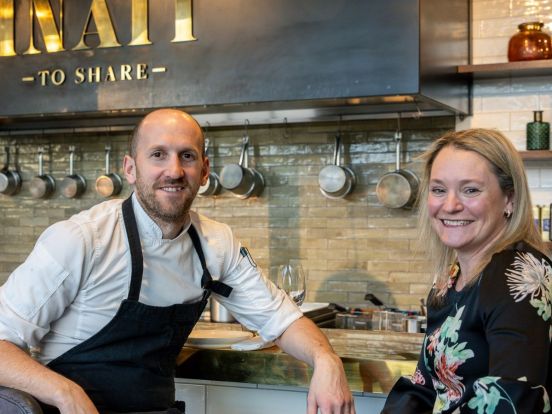The acoustics in a hospitality venue can make or break it. Noise levels can mean the difference between a group spending a pleasant evening sharing fine food and wine in a purpose-built setting, or a disgruntled bunch of diners whose nerves are frazzled because the noise levels generated are simply too high to allow a reasonable level of conversation.
In fact, it was during a birthday dinner in a very noisy Italian restaurant more than 10 years ago that Stuart Camp (a member of the Acoustical Society of New Zealand, the ASNZ), who was at the dinner, was asked by a friend – who had to lean in to be heard – why he wasn’t doing something about the noisy conditions in such places.
Also a principal at Marshall Day Acoustics Ltd in Christchurch, Camp was more than up to task and that conversation inspired him to develop the Café & Restaurant Acoustic Index, known as the CRAI, for ASNZ. The index has been structured as a 5-star system, to align with current food ranking systems, and it works by members of the public ranking venues on their acoustic levels.
“The idea behind the CRAI rating isn’t to determine ‘good versus bad’, but provide a mechanism for diners to choose an appropriate environment for their requirements,” says Camp. “A boisterous night out with a few mates demands a different venue to a romantic wedding anniversary with a loved one. We wanted the CRAI to give people information that helps them decide on the right venue for the occasion.”
Camp says the aim of the CRAI, and the ASNZ, is to encourage venue owners to listen to their customers and ensure that the acoustical environment in their establishment matches their business model. “There’s no point aiming for a 5-star food venue if the acoustic rating is two – stars,” he says.
More than 400 individual venues have been rated throughout New Zealand, representing nearly 800 submissions. And assessing acceptable noise levels in hospitality venues, Camp says the online CRAI results show a number of five – star venues around the country, but a good number of modern cafes and restaurants are often very noisy.
“With the recent trend towards the hard, clean, minimalist look, there’s very little inherent sound absorption within many venues. It appears that designers are often so focussed on the look they want to achieve, they don’t think about the noise levels. We suspect that sound absorptive treatment is viewed as having a particular ‘acoustic’ look, but there are now some very good options available which can easily fit the look that designers are trying to achieve.
“If hospitality operators already own a venue that is too noisy, adding sound absorptive treatment is more challenging than incorporating at the time of the build or fit-out. Light fittings, sprinklers, and air-conditioning outlets often make it difficult to treat large areas. However, using artwork to treat spaces, and treating clear areas of walls or ceilings can provide some relief.
“Think acoustics first,” says Camp. “When planning a new venue, don’t wait until it’s finished to think about how noisy it might be. There are many options available during the design phase, which aren’t available once the venue is complete, and treatment is a lot cheaper when it’s installed as part of an overall fit-out.”
The cost of treating venues varies, based on size and other unique factors. However, if treatment is designed and installed during fit-out, Camp says the cost will be very small in the context of the total budget. Encouragingly though, “As a retrofit, we’ve assisted clients who’ve installed very successful treatment for a few thousand dollars. It’s money that operators never regret spending.”









